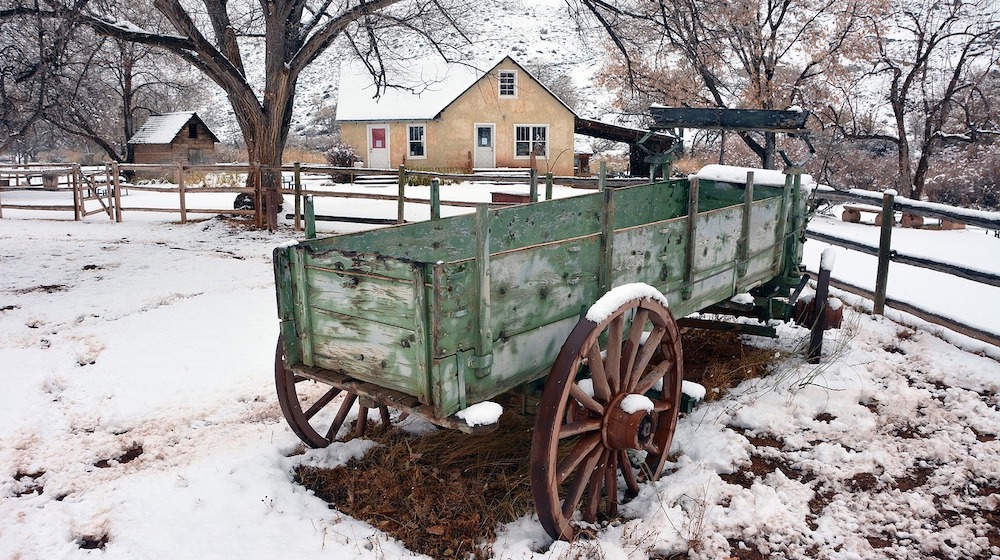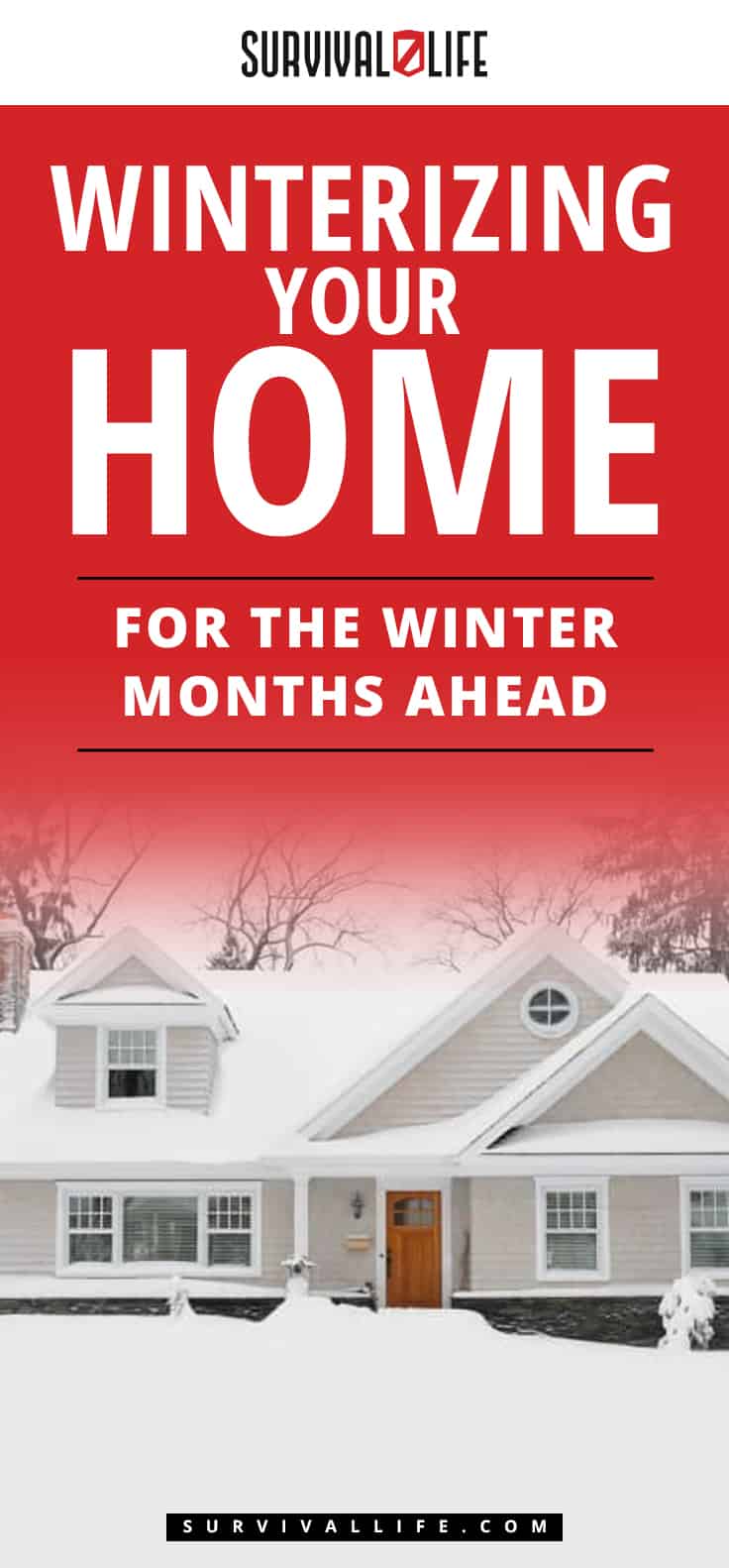Winter Survival
Winterizing your Home for the Winter Months Ahead

We are getting to that time of year when things will begin to freeze at night. The leaves are falling and there is that crisp feeling in the air. As much as I love fall, I am not a big fan of the winter months. In addition to just disliking cold weather, winter weather can also do damage to my home. In many cases, winter provides the highest utility bills of the year as well. However, with a few simple steps you can ensure that damage is avoided and your bills stay as low as possible. In this article the tips and tricks in winterizing your home!
Winterizing your Home
Mind your Furnace
For most people, the furnace will provide all of your heat for the winter months. This means that servicing or replacing your furnace in the fall is one of your more important tasks. If you wish to get the lowest heating bills possible, you may want to upgrade to a high efficiency furnace. My parents just went through this process and told me they cut their heating bill in half! Energy star furnaces will run 15-20% more efficient than other new furnaces, but will greatly exceed those number versus old furnaces. Be sure to take advantage of rebates up to $500.
You also should maintain your existing furnace if you plan to stick with it. Many utility and HVAC companies offer free inspections on your furnace. Then once you know what you need, you can pay them to do the work or do it yourself. Just giving your existing furnace a tune up can increase efficiency by 5%. Also, be sure you replace your furnace filter once a month during winter months. This will increase its efficiency as well as remove dust, mold, and bacteria that can affect your family. Consider a HEPA filter that controls almost 100% of particles or an electrostatic filter that eliminates 88% of particles. These figures are compared to 10-40% for standard fiberglass filters. You can also purchase a permanent filter that never needs to be changed.
Doors and Windows
Drafts are a huge issue during the winter reducing efficiency by 10-30%. Once good option to consider is a simple draft dodger at the base of your exterior doors. This is simply a fabric role that blocks the draft at the base of your doors. You can buy them, make them, or just roll up a bathroom towel. Storm doors and windows are another great idea. Simply adding a storm door can increase your efficiency by as much as 45%. If you do not have storm doors or windows in your attic, there are plenty of government rebates available.
For additional efficiency options, you can add plastic film to your windows. These kits only cost a few dollars and can eliminate window drafts. For an even better result, you can pay a contractor to install an e-film on all of your windows. Both options are virtually invisible when properly installed. If the draft is bad enough, you may want to just replace the windows themselves. Again, rebates are available for this project. Smaller leaks where two building materials meet can reduce energy efficiency by 5-30%. For this, weather stripping and caulking will do the job. Check for leaks around chimneys, wires, pipes, and the foundation. Just hold a lit stick of incense near the spot and see if the smoke blows away.
Additional Options
Insulation is one of the largest factors in your home’s efficiency. Unfortunately, most households are not insulated as well as they could be. Add some additional insulation in walls and the attic, or hire somebody to do it.
Be sure you reverse the direction of your ceiling fan during the winter. All ceiling fans have a switch that will adjust it to push hot air down instead of drawing it upwards.
Adjust your thermostat to a lower setting and use blankets and warm clothing to compensate. This is much less expensive than leaving it set at the most comfortable setting.
Service your air conditioning and hoses. This just means removing any water from pipes or hoses so it does not freeze. Be sure to remove any window units and store them to reduce draft in that window.
You can have a contractor conduct a full energy audit of your home. This determines how much money you would save if you made specific upgrades. My parents went through this process on their home from the 1980’s, and they were amazed by the savings. The government also covered a huge chunk of their upgrade bill.
Duct work often has leaks that reduce efficiency by 5-30%. Either hire a contractor to inspect your duct work, or seal them yourself.
Plumbing can a be a large weakness in your home efficiency. First, you can reduce the temperature on your water heater. Many contractors set water heaters at 140F, but you really only need it at about 120F. In addition, you can insulate your pipes. Check to see if they are warm to the touch. If they are, you can buy precut pipe insulation at your hardware store.

Up Next: Disaster-Proof Survival Seeds And How To Store Them
-

 Paracord Projects1 year ago
Paracord Projects1 year agoParacord Projects | 36 Cool Paracord Ideas For Your Paracord Survival Projects
-

 Paracord Projects1 year ago
Paracord Projects1 year agoHow To Make Paracord Survival Bracelets | DIY Survival Prepping
-

 Medical Care1 year ago
Medical Care1 year ago21 Home Remedies For Toothache Pain Relief
-

 Knife Laws1 year ago
Knife Laws1 year agoAre Switchblades Legal? Knife Laws By State
-

 Do It Yourself1 year ago
Do It Yourself1 year agoSurvival DIY: How To Melt Aluminum Cans For Casting







Michael W. Perry
November 20, 2017 at 12:34 PM
Quote: Be sure you reverse the direction of your ceiling fan during the winter. All ceiling fans have a switch that will adjust it to push hot air down instead of drawing it upwards.
In summer, it is best to have the fan blowing downward, so it cools those underneath. That’ll make a room feel about 5 degrees cooler. In winter the usual advice is to have the fan blow upward, which distributes the warm air at the ceiling out toward the walls. Since the walls tend to be cooler, that makes the room’s heating more uniform. It also keeps the fan from blowing directly on people, creating a wind chill factor.
And thanks for reminding me that mine need changing.
Dave
November 23, 2017 at 4:47 AM
Water heater is set at 140 to prevent the growth of dangerous bacteria such as Legionnaires disease in the water heater tank. A lower setting can provide the perfect incubator temperature for Legionella to grow! Also, to help sanitize dishes, the hotter water is essential.
Pingback: Winterizing your Home for the Winter Months Ahead – Preppers Info
Pingback: How To Stay Warm In Winter | How To Heat Your Home - Survive!